During World War II, the Bataan Death March was a horrific forced march by the Japanese Imperial Army on American and Filipino prisoners of war. The 63-mile march from the southern end of the Bataan Peninsula in the Philippines began on April 9, 1942, with at least 72,000 POWs. According to some accounts, 75,000 soldiers were taken prisoner after the Bataan surrender; about 12,000 Americans and 63,000 Filipinos. The Bataan Death March resulted in an estimated 7,000 to 10,000 deaths due to the prisoners’ deplorable conditions and cruel treatment.
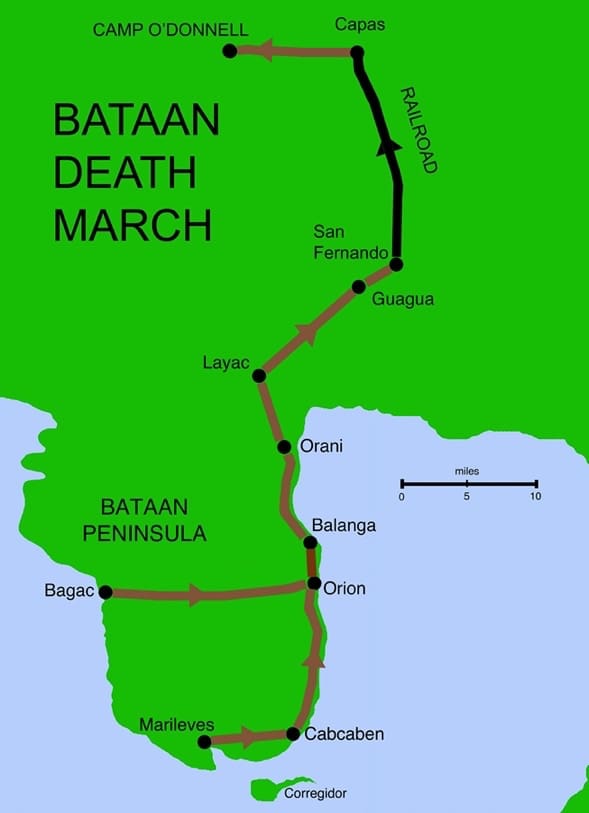
“This was the First Murder”
Captain William Dyess was a fighter pilot stationed on Luzon when the Japanese invaded. Captured when the American forces on Bataan surrendered, he joined the Death March and was interned by the Japanese. In April 1943, Captain Dyess was one of three prisoners able to escape from their captors. Captain Dyess eventually made his way back to America, where his story was published.
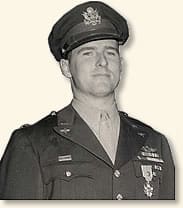
“The victim, an air force captain, was being searched by a three-star private. Standing by was a Jap commissioned officer, hand on the sword hilt. These men were nothing like the toothy, bespectacled runts whose photographs are familiar to most newspaper readers. They were cruel of face, stalwart, and tall.
‘’The private, a little squirt, was going through the captain’s pockets. All at once, he stopped and sucked in his breath with a hissing sound. He had found some Jap yen.
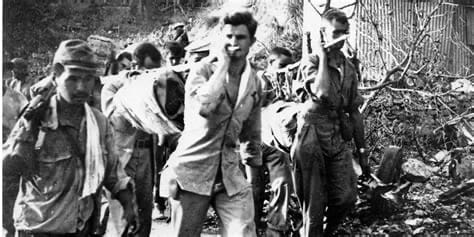
“He held these out, ducking his head and sucking in his breath to attract notice. The big Jap looked at the money. Without a word, he grabbed the captain by the shoulder and shoved him down to his knees. He pulled the sword out of the scabbard and raised it high over his head, holding it with both hands. The private skipped to one side.’
‘Before we could grasp what was happening, the black-faced giant had swung his sword. I remember how the sun flashed on it. There was a swish and a kind of chopping thud, like a cleaver going through beef’.
‘The captain’s head seemed to jump off his ‘shoulders. It hit the ground in front of him and went rolling crazily from side to side between the lines of prisoners.’
‘The body fell forward. I have seen wounds, but never such a gush of—blood as this. The heart continued to pump for a few seconds, and at each beat, there was another great spurt of blood. The white dust around our feet was turned into crimson mud. I saw the hands were opening and closing spasmodically. Then I looked away.’
‘When I looked again, the big Jap had put up his sword and was strolling off. The runt who had found the yen was putting them into his pocket. He helped himself to the captain’s possessions.’
“This was the first murder.”
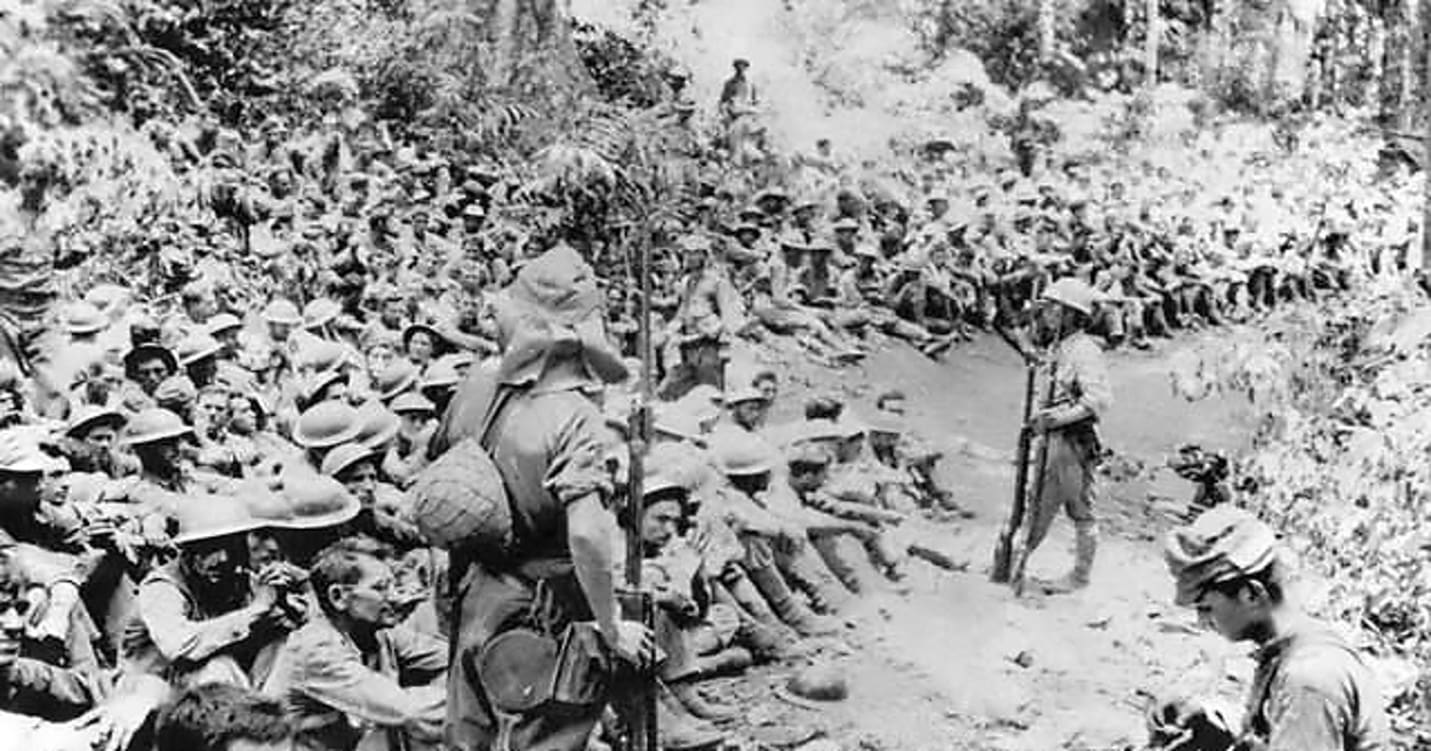
Oriental Sun Treatment
As the prisoners were herded north, they collided with advancing Japanese troops moving to the south, forcing a brief halt to the march:
“Eventually, the road became so crowded we were marched into a clearing. For two hours, we had our first taste of the oriental sun treatment, which drains the stamina and weakens the spirit.
The Japs seated us on the scorching ground, exposed to the full glare of the sun. Many of the Americans and Filipinos had no covering to protect their heads. I was beside a small bush, but it cast no shade because the sun was almost directly above us. Many of the men around me were ill.
When I thought I could stand the penetrating heat no longer. I was determined to have a sip of the tepid water in my canteen. I had no more than unscrewed the top when the aluminum flask was snatched from my hands. The Jap who had crept up behind me poured the water into a horse’s nose-bag, then threw down the canteen. He walked on among the prisoners, taking away their water and pouring it into the bag. When he had enough, he gave it to his horse.”
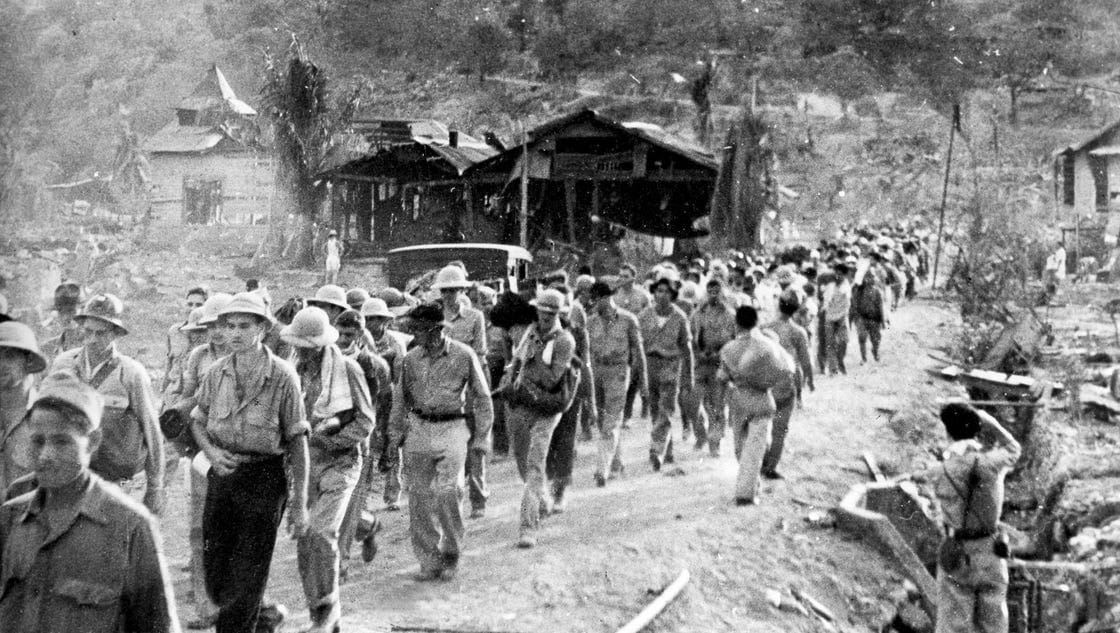
Drop-outs
The parade of death continues its journey as its members inevitably succumb to the heat, the lack of food, and the lack of water:
“The hours dragged by and, as we knew, they must. The drop-outs began. It seemed that a great many of the prisoners reached the end of their endurance at about the same time. They went down by twos and threes. Usually, they made an effort to rise. I never can forget their groans and strangled breathing as they tried to get up. Some succeeded. Others lay lifeless where they had fallen.
I observed that the Jap guards paid no attention to these. I wondered why. The explanation wasn’t long in coming. There was a sharp crackle of pistol and rifle fire behind us.
Skulking along, a hundred yards behind our contingent, came a ‘clean-up squad’ of murdering Jap buzzards. Their helpless victims, sprawled darkly against the white of the road, were easy targets.
As members of the murder squad stooped over each huddled form, there would be an orange ‘flash in the darkness and a sharp report. The bodies were left where they lay, that other prisoners coming behind us might see them.
Our Japanese guards enjoyed the spectacle in silence for a time. Eventually, one of them who spoke English felt he should add a little spice to the entertainment.
‘Sleeper?’ he asked. ‘You won’t sleep? Just lie down on the road. You get good long sleep!’
On through the night, we were followed by orange flashes and thudding sounds.”

Arrival at San Fernando
Finally, after five days without food and little water, the dwindling column arrives at its destination:
“The sun still was high in the sky when we straggled into San Fernando, a city of 36,000 population, and were put in a barbed wire compound similar to the one at Orani. We were seated in rows for a continuation of the sun treatment. Conditions here were the worst yet.
The prison pen was jammed with sick, dying, and dead American and Filipino soldiers. They were sprawled amid the filth and maggots that covered the ground. Practically all had dysentery. Malaria and dengue fever appeared to be running unchecked. There were symptoms of other tropical diseases I didn’t even recognize.
Jap guards had shoved the worst cases beneath the rotted flooring of some dilapidated building. Many of these prisoners had already died. The others looked as though they couldn’t survive until morning.
There had been no burials for many hours.
After sunset Jap soldiers entered and inspected our rows.
Then the gate was opened again, and kitchen corpsmen entered with cans of rice. We held our mess kits and again passed lids to those who had none. Our spirits rose. We watched as the Japs ladled out generous helpings to the men nearest the gate.
Then, without explanation, the cans were dragged away, and the gate was closed. It was a repetition of the ghastly farce at Balanga. The fraud was much crueler this time because our need was vastly more significant. In our bewildered state, it took some time for the truth to sink in. When it did, we were too discouraged even to swear.”
References:
This eyewitness account appears in Dyess, William E., The Dyess Story (1943);
brokenmap.com/horrors-of-the-bataan-death-march


Never forget.
My great uncle died while a civilian prisoner in Santo Thomas. He was a showman for International Harvester in the Philippines when the war broke out.
My grandfather fought in both Europe and the Pacific and once said an interesting thing; fighting the Germans etc was fighting people who knew how to lose, they’d lost before and new the game; but the Japanese didn’t have that, to them defeat would mean overthrowing the gods who were so powerful they excused the atrocities.
Two A bombs took care of that.